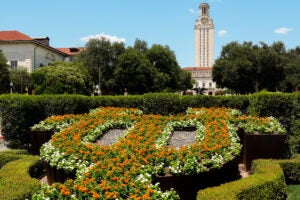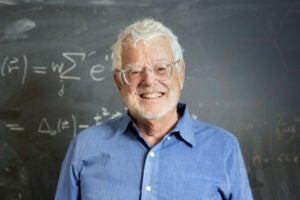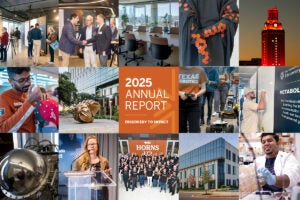This blog entry originally appeared in The Texas Tribune.
The Republican advantage in enthusiasm and intensity continues to pose serious obstacles to Democratic gains in Texas in the latest University of Texas at Austin/Texas Tribune poll. We timed our fall surveys to take snapshots of the last moment of the summer phase of the campaigns in early September and the period when Texans began to turn more attention to the election in October.
The October 2010 poll, as you now know, shows Rick Perry leading Bill White 50 percent to 40 percent among self-reporting registered voters, with Republican candidates in other statewide races enjoying double-digit leads and the results of the generic congressional ballot favoring the Republican Party by 18 points.
The Perry-White result includes the responses to a follow-up question posed to those who responded “don’t know” about their preference for governor. When we pressed respondents to express a preference, equal numbers chose Perry and White, adding 5.4 percent to each candidate’s totals.
The enthusiasm gap
There has been a great deal of talk in this election cycle about the “enthusiasm gap” — the tendency of one partisan side (in this case, the Republicans) to tell pollsters that they are more interested in this election and more likely to vote. We have certainly seen evidence of this in the UT/Texas Tribune polls this year. Across all polls, Republicans have been 9 points more likely than Democrats to say they are “extremely interested” in politics. The direction of the enthusiasm gap has reversed itself from 2006 and 2008, when Democratic voters — especially African Americans and younger voters — were more likely to show interest and a determination to cast their ballots. The main question associated with this phenomenon in 2010, however, is whether it will manifest itself in a disproportionately pro-GOP electorate.
One issue associated with the enthusiasm gap involves estimating the likely electorate. Like most polling organizations, we have been reporting our trial ballot results among registered voters throughout 2010. As the election nears, though, we wanted to estimate who is a likely voter within our poll and report the ballot numbers for that sub-sample. Predictably, since these likely voter models rely on self-reported interest and turnout intent, they have produced significantly more Republican-leaning results than we find among all registered voters. In the case of Gallup’s initial likely voter results, a single-digit Republican edge in the generic ballot for Congress swelled to a 19-point GOP advantage.
Who will vote?
In light of all this, we faced two important decisions: (1) how to estimate the likely electorate for 2010 and (2) whether and how to report our numbers.
Let us dispense with the second question first: We decided to report our numbers among registered voters for the sake of continuity. We also decided, however, to estimate a likely voter model and report the results. We should emphasize that we are not “hiding” these numbers. We make clear that our top-line results are for all registered voters. Moreover, transparency is one of our primary goals. Perhaps most notably, the UT/TT data are available for download, so people can create their own turnout models.
So how to create a likely voter model?
Since we are not sampling off of the registered voter list and do not have reliable, validated turnout data from Texas, we rely on self-rated interest and turnout history. This is not ideal, but almost all of the major national polls use this method, and their results have tended to be very close to the actual results on election day. More particularly, our likely voters are those who:
- Say they have voted in “every” election or “almost every” election over the past three to four years and say they are either “extremely” or “somewhat interested” in politics.
- Say they have voted in past elections “some of the time” over the past three to four years and say they are “extremely interested” in politics.
How the screens affect the results
Given the undoubted inflation of both past turnout and current interest, this is a pretty generous screen, with 600 of 800 registered respondents qualifying as likely voters. And how does this affect the race for governor? Among all respondents in the sample, Perry leads White 50 percent to 40 percent, with just less than 1 percent undecided. Among likely voters, however, Perry leads White 55 percent to 35 percent, with 1 percent undecided. As you might expect from those numbers, those who are least likely to vote are also younger, more racially and ethnically diverse and more Democratic.
In Texas, the enthusiasm gap in late October is very real, and it could be the difference (as Democratic pollster Peter Hart has said) between a Category 3 and a Category 5 hurricane.
Daron Shaw, is a professor in the university’s Department of Government. Shaw was an analyst and consultant in the 1992, 2000 and 2004 presidential campaigns. He has written two books on voters and election campaigns and teaches classes on survey research analysis, public opinion and voting behavior, campaigns and elections, political parties and American government.
James Henson is a lecturer in the Department of Government and directs the Texas Politics Project, which seeks to educate students and Texans about state government, politics and history through a dynamic Web site and speaker series. It also conducts regular statewide issues and political polls.
More election posts from James Henson:
- Oct. 11: Dueling interviews in the governor’s race
- Oct. 4: Dissecting the polls in the Perry-White race
Visit the mid-term elections blog series home page for a complete lineup of faculty experts’ analyses.



